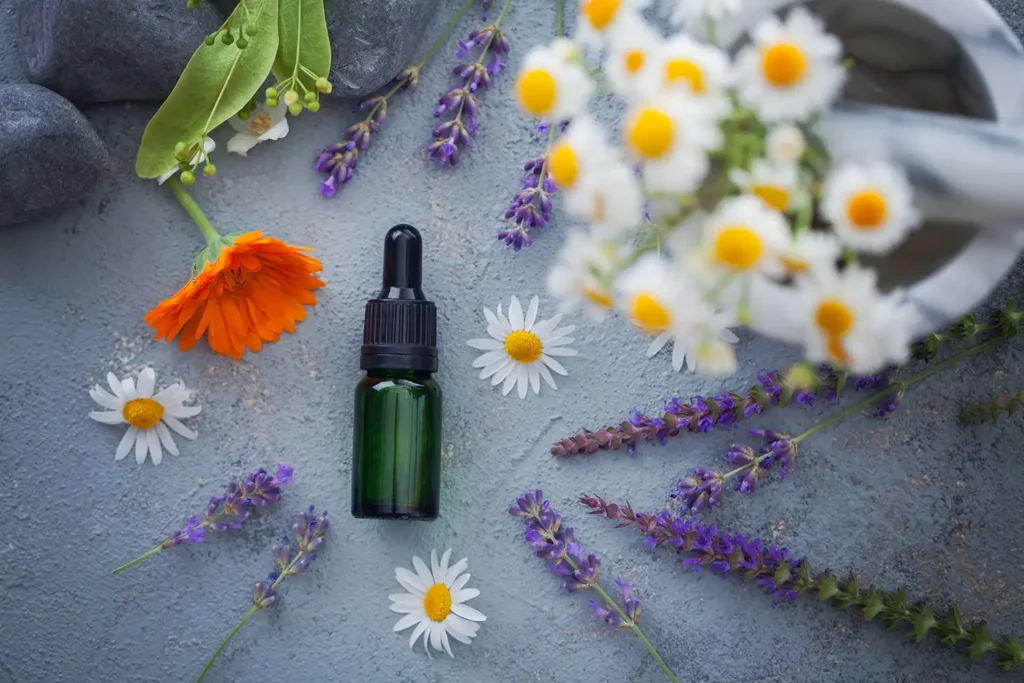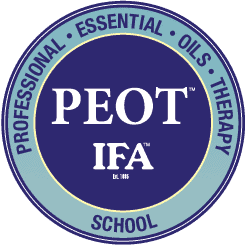A Brief History of Distillation
The Egyptians were among the first to use different techniques to make essential oils from plants and herbs for their perfumes and medicines. They soaked the raw plant material in water and then heated the mixture, capturing the steam that contained the essential oils. The steam would then be condensed and collected, resulting in the extraction of the aromatic compounds. When the Pharoahs tombs were opened in 1897, perfumes that they had been buried with 2,000 years previously were still fragrant.
The Greeks and Romans also distilled plants to extract essential oils like Lavender oil, with Greek physician Dioscorides documenting many different processes in his writings about natural medicine. However, it wasn’t until the 10th century that distillation techniques for essential oils began to be used in Europe. Avicenna further improved extraction methods for distilling essential oils.
The Importance of Extracting Essential Oils
Essential oils are highly concentrated extracts from plant raw material that carry the natural fragrance and therapeutic properties of the plant, making them valuable for various purposes. These oils are extensively used in aromatherapy as they can promote relaxation, relieve stress, and improve overall well-being.
They also have antimicrobial and antifungal properties, making them effective in treating skin conditions and other ailments. They can also be used as natural insect repellents and in household cleaning products.
The oils are also essential ingredients in the fragrance and cosmetic industries. They are used in perfumes, lotions, soaps, and other beauty products to provide scent and additional skin benefits.
Fundamental Concepts of Distillation
What is Distillation?
This process is commonly used in chemistry and industrial applications to separate mixtures into their components or purify liquids. It works on the principle that different substances have different boiling points.
In a typical still set-up, the raw material is heated, and as the water boils, the hot water turns to steam. This can take from a half hour to several hours. The component that vaporises first is the one with the lowest boiling point. The vapour is then cooled and condensed into a liquid form, which is collected separately.
This process continues with the components having higher boiling points vaporising and condensing in separate stages. Most essential oils are produced this way. Through distillation, substances like alcohol, petrol, and essential oils can be purified or extracted for various uses in industries such as pharmaceuticals, petroleum, and perfumery.
Different Types of Distillation
Various methods have unique applications and advantages in multiple industries.
Simple distillation is commonly used to separate two or more liquids with distinct boiling points.
Fractional distillation is a more complex method used to separate multiple components of a mixture based on their boiling points.
Azeotropic distillation is employed when a mixture forms an azeotrope, a constant boiling point mixture.
Steam distillation is a technique used to extract essential oils from plant raw material.
Vacuum distillation is used to reduce the boiling point of the components to avoid thermal degradation.
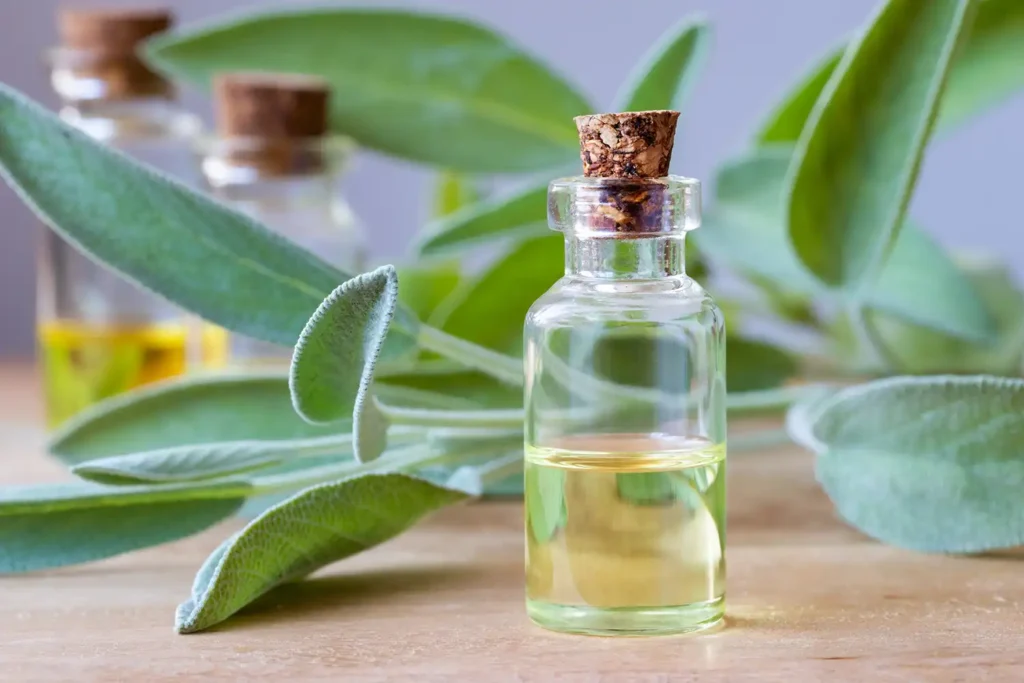
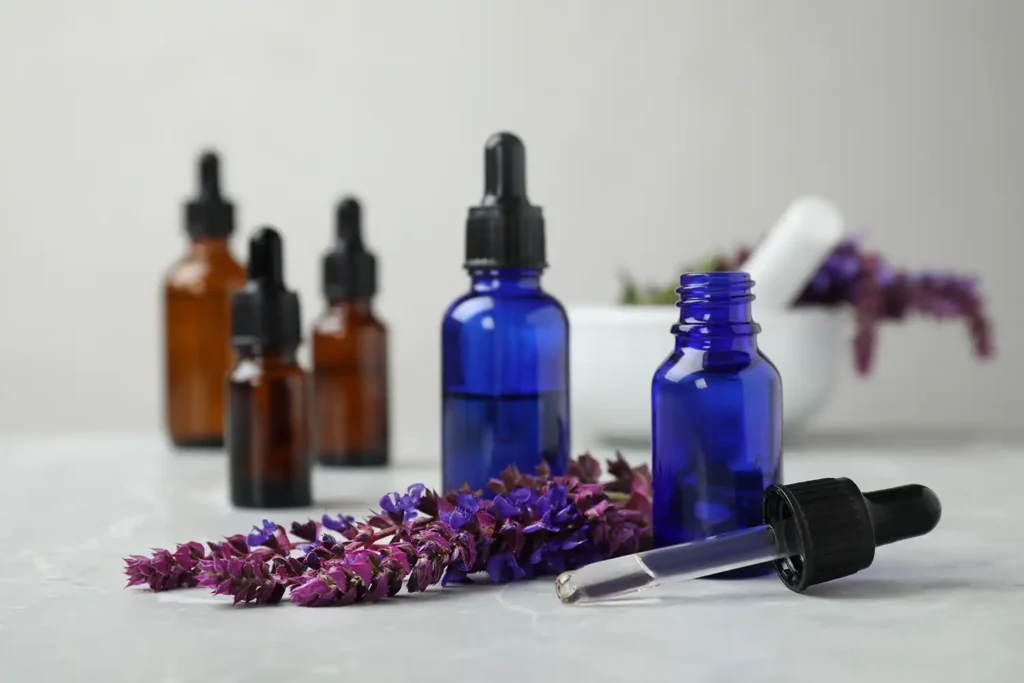
Components of Essential Oils
Primary Constituents
Essential oils are complex mixtures of volatile compounds that are derived from plants. They are commonly used in aromatherapy, perfumes, and various other products.
The chemical compounds found in essential oils can be divided into two main categories:
Hydrocarbons: These compounds contain only carbon and hydrogen and are made up almost exclusively of terpenes, including monoterpenes and sesquiterpenes. Examples of hydrocarbons in essential oils include limonene, pinene, and myrcene.
Oxygenated compounds: Plants can make oxygenated compounds from hydrocarbons. These compounds contain hydrogen, carbon, and oxygen, including esters, aldehydes, ketones, alcohols, phenols, and oxides. Examples of oxygenated compounds found in essential oils include linalool, geraniol, and eugenol.
Benefits and Uses
Terpenes are a diverse group of organic compounds that play a vital role in essential oils and cannabis.
There are two main types of terpenes: Monoterpenes (made up of two isoprene units) and Sesquiterpenes (made up of three isoprene units). These compounds are responsible for plants’ distinct aromas and flavours and have many therapeutic benefits and uses.
Essential oils containing terpenes have been used for centuries for their therapeutic properties. Monoterpenes such as Limonene and Alpha-Pinene have been found to have antibacterial, antifungal, and antioxidant properties. They also have the ability to stimulate the immune system and reduce inflammation.
Sesquiterpenes like Beta-Caryophyllene and Farnesene have been shown to have anti-inflammatory and analgesic properties, making them helpful in relieving pain and promoting healing.
Essential oils contain other chemical classes, such as esters, aldehydes, ketones, alcohols, phenols, and oxides. These compounds add scent and flavour to oils. The oils give specific smells and taste to perfumes, cosmetics, and food. They can also be used as natural preservatives due to their antimicrobial properties.
Step-by-Step Essential Oil Distillation Process
Preparation of Plant Material
Harvesting and Selection
This is a crucial process that determines the quality and quantity of the final product. It involves choosing the right stage of plant growth for maximum content and ensuring proper handling and storage to preserve the volatile compounds.
Depending on the essential oil extracted, many factors are involved in harvesting the aromatic plants. Some flowers like Jasmine need to be harvested at dawn because the aromatic molecule concentration is at its highest at that time of day. Rosemary needs to be harvested when it is in full bloom. Other plants like Patchouli must be harvested and then fermented before distilling. This increases the productivity and quality of the finished product.
Different parts of the same plant may be used for distilling essential oils. The orange tree produces Neroli from the blossoms, Petitgrain from the leaves and twigs, and Orange essential oil from the peel of the fruits. The harvesting times are different for each.
Even the geographical location can make a difference. For example, the Cinnamomum camphora tree produces three essential oils that vary depending on where the tree is grown – Camphor, Ho Wood, and Ravintsara oils all come from the same tree. However, they are grown in different regions worldwide and are affected by local climate and growing conditions.
Pre-processing Techniques
An important pre-processing technique involves removing impurities, such as dirt or debris, and sorting the plant material to ensure that only the desired parts are used.
One common method is the process of drying the plant material, as moisture can affect the quality and quantity of oils obtained. Usually, plant material is spread out in a single layer and left to air dry, or it can be dried using specialised equipment.
Another important pre-processing technique is grinding or shredding the plant material into smaller pieces. This increases the surface area of the material, allowing for more efficient extraction of the oils during the process.
Some plant materials may require a process called maceration, where they are soaked in a solvent to extract the essential oils before they are distilled.
Actual Essential Oil Distillation Procedure
Heating and Vaporisation
This stage is a critical step in the production of essential oils. The raw material is placed in a stainless steel vessel, and cold water is heated to a specific temperature. The heat source is usually electric or gas. As the temperature rises, the volatile compounds in the plant material start to evaporate. These volatile compounds, including essential oils, have a lower boiling point than water. As a result, they vaporise and rise to the top of the vessel.
Condensation and Collection
The vapour then travels through a condenser, where it is cooled and converted into liquid. This condensed liquid is collected in a separate container. The essential oil floats on the surface of the condensed liquid, and the liquid below is called a hydrosol or hydrolat. It has many of the properties of the essential oil and is also used in aromatherapy and cosmetics.
Separation and Refinement
Having collected the condensed vapour, gravity is the simplest way to separate the essential oil from the hydrosol as it will float above the water. The essential oil content will then be checked in a laboratory to ensure a high-grade oil. Lower-quality oils can still be sold as essential oils. To avoid paying more for an inferior product, it’s important to check the gas chromatogram analysis of the oil.
Many times, a lower-quality oil can undergo fractional distillation. The oil is heated again in a vessel with a narrow glass tube going upwards. The lighter molecules are the first to reach a gaseous state and rise to the highest part of the tube. The molecules arrange themselves so that the heaviest molecules are at the bottom of the tube.
Knowing the molecular weight of the molecules means that they can be separated at different heights in the tube. For example, the -cis isomer of Rose Oxide is part of what makes a natural rose flower smell so gorgeous. Rose Oxide is plentiful in Geranium essential oil, which is vastly cheaper to produce than Bulgarian Rose oil and Damask Rose oil. The extracted Rose Oxide is added to lower-quality rose oils to boost the fragrance. Again, understand your gas chromatogram documents before investing heavily in expensive oils.
Storage and Preservation
After production, essential oils can be easily affected by various factors such as light, heat, air, and moisture. They are usually stored in an airtight container in bulk or lacquer-lined aluminium flasks, which are non-reactive and protect the precious oils. Wholesalers then decant these down into dark-coloured glass bottles for retail sale. After all that effort put into distilling essential oils, you should also play your part after buying them. Store your own essential oils out of direct sunlight – ideally somewhere cool and dark.
Also, ensure the bottles are labelled correctly with their batch number and best-before dates. This way, you have the correct information in place for labelling your creams and lotions when you are ready to sell them.
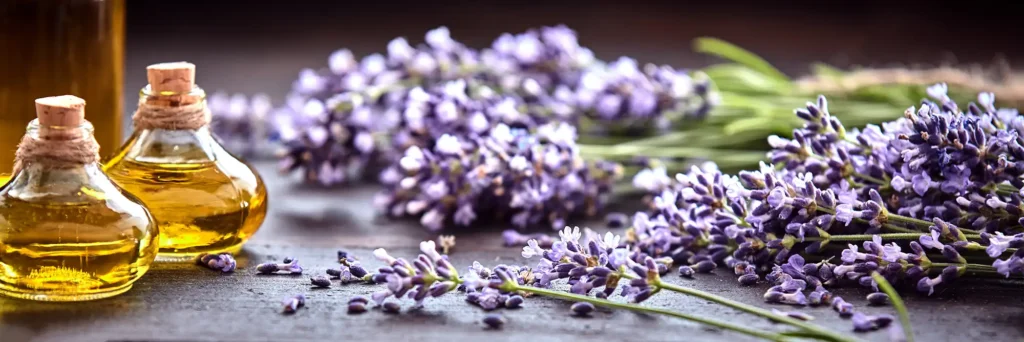
The Different Methods of Essential Oil Extraction
There are several other processes to get volatile oils from plant matter, each with unique benefits and drawbacks. Each method has advantages and disadvantages, and the extraction method will depend on the specific plant material and desired outcome.
Steam Distillation
One of the most common methods is using steam. The high heat of the steam carries the volatile oils upwards into the condenser, where they cool down and are collected. Many oils, like Lavender essential oil, can be effectively extracted using this method. However, the heat may harm certain delicate plant materials and, therefore, require an alternative process.
Water Distillation
Fragile blooms like roses and orange blossoms tend to form clusters when exposed to steam. Therefore, the most efficient technique for extracting in such circumstances is to immerse delicate plant matter in sterile boiling water instead. This water protects the plant from excessive heat. The chemical components disperse throughout the water. The condensate then cools down, and the oil and water naturally separate.
Water and Steam Distillation
This combination of both methods can be used for extracting oils from a wide range of plants. This method involves passing both water and steam through the plant material, allowing for a more efficient extraction of oils, where the plant material is placed in boiling water in the stainless steel still, and steam is passed through the water. The condensate cools down, and the distilled oil is separated.
Cold Press Extraction
Cold press extraction is another extraction method, but it differs from the previous methods. Instead of using heat, cold press extraction involves pressing the plant material to release the oils. This method is often used for citrus fruits.
This method, also known as Expression or Abrasion, is specifically used for citrus peels. It is not the same as cold pressing, which produces carrier oils like Olive and Coconut oil. The entire fruit is placed in a device that punctures it mechanically to rupture the sacs containing essential oil, which are found underneath the rind. The whole fruit is compressed to extract the juice and oil. The citrus oils and pigments flow into the collection area at normal temperatures. No cooling process is needed, so this is then separated by a centrifuge to remove the solids. The oil will naturally separate from the juice.
Enfleurage
Enfleurage is not frequently employed nowadays as it is excessively labour-intensive. However, it remains one of the earliest techniques for extracting essential oils using fat. Purified and scentless animal or vegetable fat, such as lard or tallow, is spread on glass plates and allowed to solidify.
Fresh flowers or flower petals are placed on the layer of fat and pressed in, left to set for a duration ranging from 1–3 days or a few weeks, depending on the specific flowers used. During this time, the aromatic molecules permeate into the fat. As the fragrance depletes, new petals are added, and the process is repeated until the fat achieves the desired saturation.
The end result is called a pomade, comprising both the fragrant oil and fat. To separate the botanical extract from the remaining fat, the pomade is washed with alcohol. The mixture is carefully heated so that the alcohol evaporates. The remaining product is known as the “absolute”.
Solvent Extraction
This extraction process uses chemical solvents like hexane and ethanol, which are safe for consumption, to separate aromatic molecules from plants. This method works well for plants with low oil yield, resinous plants, or plants with delicate aromas that can be harmed by steam. Additionally, solvent extraction produces a more refined fragrance compared to other methods.
After adding the solvent to the plant material, it becomes a solid compound called “concrete.” Concrete has a waxy texture and contains aromatic properties. When alcohol is combined with this concrete substance, the oil particles are released. The solvents mentioned earlier remain in the oil, which is then used by the perfume industry for creating fragrances or for aromatherapy purposes.
CO2 Extraction
CO2 extraction involves using carbon dioxide gas under high pressure and low temperature to extract the aroma molecules. This method has become popular due to its ability to preserve the quality and properties of the oil. Unlike other extraction methods that use heat and solvents, CO2 extraction retains the plant’s natural aroma and therapeutic properties.
The process begins by compressing the gas, which turns it into a liquid. This liquid then passes through the plant material, dissolving the essential oil. The CO2 acts as a solvent, extracting the oil without leaving any residue. Once the pressure is released, the carbon dioxide is easily evaporated, leaving behind a highly concentrated, pure essential oil. The oil may contain a wider range of the plant’s constituents, and it does not always look or smell as you would expect from a steam-distilled version.
This method is efficient and environmentally friendly, as the carbon dioxide used in the process can be recycled and reused. CO2 extraction is particularly valuable to extract essential oil from delicate plant materials that cannot withstand high temperatures or harsh chemicals. It also means there is no potential human body contamination with chemical solvent residues.
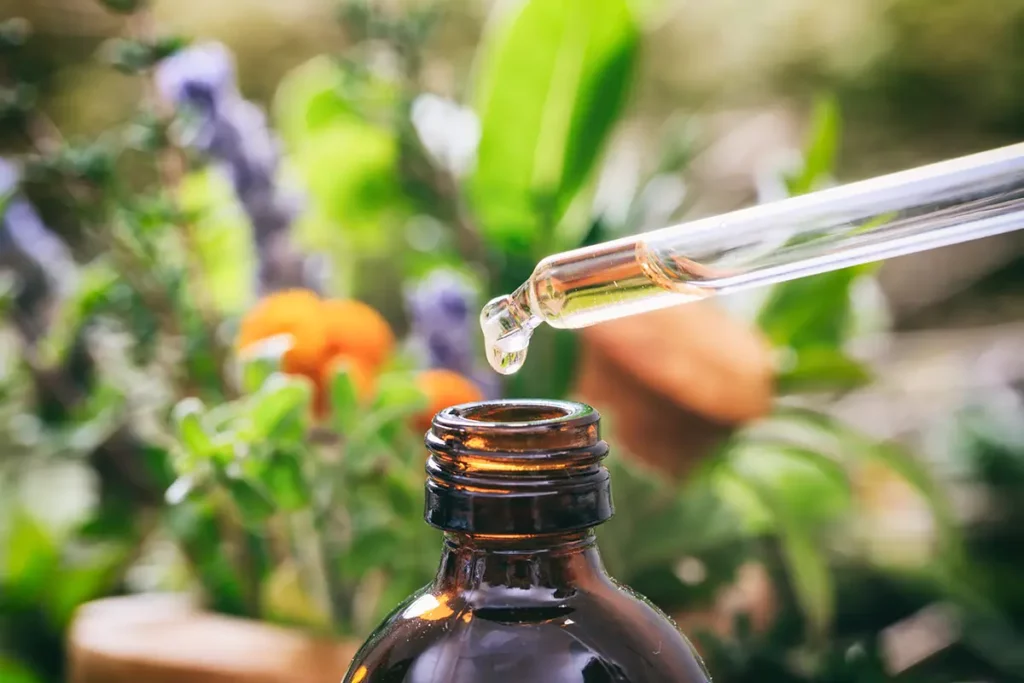
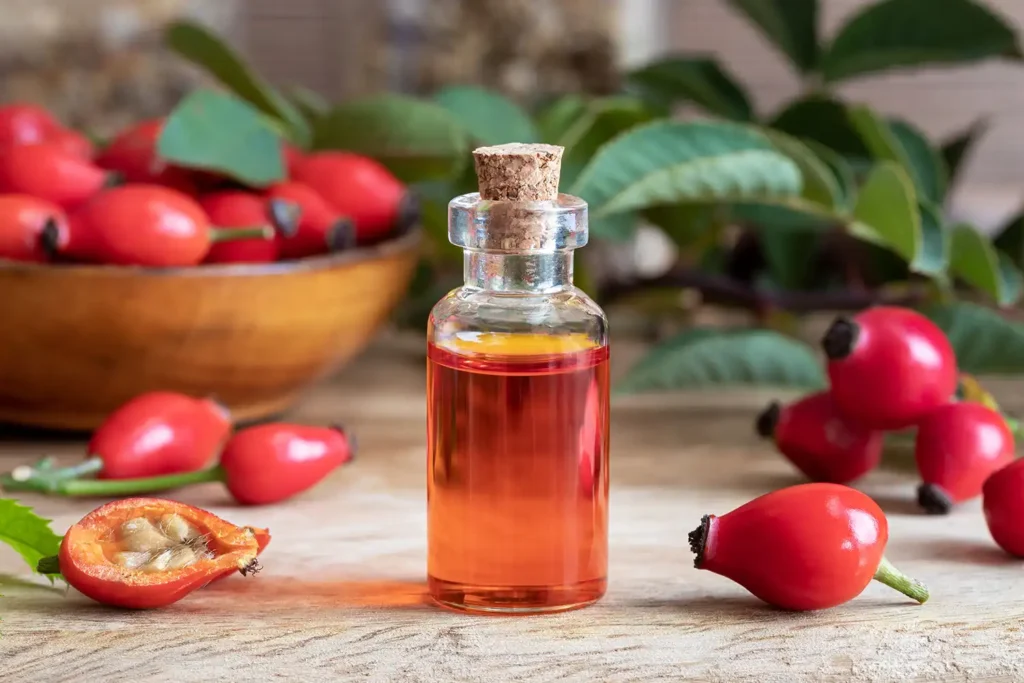
Applications and Uses of Essential Oils
Aromatherapy and Wellness
The scents of essential oils can directly impact the brain and nervous system, promoting relaxation and reducing stress and anxiety.
They may be used in a diffuser or nebuliser, which disperses the aroma molecules around the room. This is popular in spas and meditation centres. Japanese companies also do this to stimulate their staff and keep them alert.
They can be added to a carrier oil like Coconut oil to be used at home directly on the skin or as part of a massage.
You can use your own essential oils in formulations for creams, lotions, balms, gels, shampoos, and conditioners.
Culinary Applications
Many essential oils have flavours that enhance food and beverage taste. They are highly concentrated, so only a small amount is needed to achieve a strong flavour. Peppermint is often mixed with chocolate. It is said that there are 18 types of essential oil in the secret recipe for Coca-Cola.
However, we do not recommend using essential oil internally.
Cosmetic and Skincare Products
Essential oils have become increasingly popular in the cosmetic and skincare industry due to their numerous benefits for the skin. These oily extracts are extracted from plants and contain concentrated compounds that have therapeutic properties. Essential oils can help reduce inflammation and have antibacterial and antifungal properties. This makes them ideal for treating skin conditions like acne, eczema, and psoriasis.
Medicinal Properties
Essential oils have been used for thousands of years for their medicinal properties. Many have antibacterial, antifungal, and antiviral properties, making them effective in treating infections and promoting wound healing.
Some of them also have anti-inflammatory properties, which can help reduce inflammation and pain. Peppermint oil, for example, has been shown to relieve headaches and muscle soreness. Due to its expectorant properties, Eucalyptus oil is commonly used for respiratory conditions, such as coughs and congestion.
Safety Considerations
Environmental Impact and Sustainability
Essential oil extraction can harm plant species and ecosystems due to the large number of plants needed. This can have negative environmental impacts and sustainability concerns. The increasing popularity of essential oils has also increased demand, which can lead to over-harvesting and unsustainable practices. It is important to consider the sourcing and production methods to ensure they are obtained in an environmentally responsible and sustainable manner.
Potential Risks of Essential Oils
Allergic Reactions
When using essential oils, it is important to be aware of the potential risks associated with their use. One of the primary concerns is the risk of allergic reactions. Some individuals may be hypersensitive to certain ones and may experience skin irritation, redness, or a rash upon application. We recommend doing a patch test before using any new essential oil to determine if you have any adverse reactions.
Toxicity Concerns
While they are considered natural substances, they can still pose a threat if misused. Some essential oils, such as Wintergreen and Eucalyptus, contain high levels of methyl salicylate and can be toxic if ingested in large quantities. Additionally, certain essential oils can irritate the mucous membranes or cause phototoxicity when exposed to sunlight.
Always follow the recommended dosage guidelines and consult a healthcare professional before using an essential oil, particularly if you have any existing medical conditions or are pregnant.
Conclusion and Future of Essential Oil Distillation
Technological Advancements and Innovations
In the last few decades, developing new and improved extraction methods has greatly increased the efficiency and quality of essential oil production. Advanced equipment and techniques such as steam distillation, vacuum and the latest molecular distillation process have revolutionised the industry. These methods allow for the extraction with higher yields and superior quality, resulting in a more potent and aromatic end product. The industry will likely continue to evolve with the introduction of even more advanced technologies. This could include using renewable energy sources, such as solar or wind power, to reduce environmental impact.
Sustainability and Ethical Sourcing
Many consumers want environmentally friendly and socially responsible products, which is a growth market. Sustainable practices such as using renewable energy sources, implementing water conservation techniques, and minimising waste are essential for the industry’s long-term viability.
Ethical sourcing will mean getting raw materials from suppliers who follow fair trade principles and do not exploit workers. This benefits the communities involved in producing them and enhances the quality and purity of the final essential oil product. This is also a significant marketing aspect when you create your own range of skincare products.


